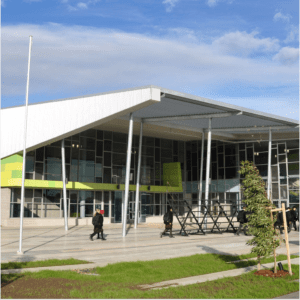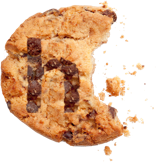“Tutoring is almost an established part of life”
Dylan Guo, NSW student, aged 15

May 12, 2016. Nossal High School, a co-educational selective school in Victoria, Australia.
May 16, 2024
Educational inequality in Australia: Is there a solution?
Australia’s selective school system was designed to provide free, high-quality education to gifted kids who couldn’t afford private schooling, but now it’s fuelling the education divide it sought to remedy.
Selective schools, government-run high schools that select students based on academic ability, have existed for hundreds of years. There are 42 in New South Wales (NSW), some of the oldest and most well-known being James Ruse Agricultural High School, Fort Street High School (both co-ed) and the single-sex Sydney Girls and Sydney Boys.
Every May, around 15,000 students aged 11 to 12 take the Selective High School Placement Test in the hope of being offered one of 4,248 places in these schools. In 2024, this rose to a record-breaking 18,544 students competing.
A spokesperson from the NSW Department of Education says the department “does not recommend that parents have their children tutored for entry into selective schools” as the tests are not designed to benefit from private tutoring.
However, many students sitting the two-and-a-half-hour test undergo tuition for at least a year before, either with a private tutor or at a coaching college. Some students have been tutored since they were just seven years old.
Tutoring doesn’t come cheap. Pre Uni College, a well-known coaching centre with over 20 branches in NSW, charges $650 AUD for a ten-day intensive summer course while private tutors can charge even more. The exam includes four sections (reading, writing, maths and thinking skills), and most students are tutored in each subject, quadrupling costs.
The Australian Curriculum, Assessment and Reporting Authority (ACARA) developed the Index of Community Socio-Educational Advantage (ICSEA) around school parents’ educational backgrounds. Selective schools usually have high scores, which usually means higher wealth.
Even if a student wins a place at a selective school, the tutoring doesn’t stop.
Now, they’re working with the best of the best. If they were once the big fish in their small ponds, they’ve now been tossed into a bigger pond with even bigger fish.
“I would say that perhaps 95% of the students in my grade do tutoring in some way, shape or form,” says Dylan Guo, 15, a pupil at a selective school. “I do English face-to-face and physics and maths tutoring online. I didn’t have a practical need for tutoring, but at the start of year 10 it was a motivation to learn ahead.”
Once reaching years 11 and 12, students begin preparation for the Higher School Certificate (HSC) so many students like Dylan start learning content one or even two years ahead at specialised tuition centres.
Tutoring at higher levels charge hefty prices. Dr. Du Education, a tutoring centre, offers final year maths courses for almost $2,000 AUD a term.
Classes are usually held weekly, after school or at the weekend. Intensive programmes are often available in the holidays to consolidate students’ learning and get ahead of school content.
In addition to keeping up with peers, school pride also motivates students to attend tutoring colleges. At the end of every year, schools are publicly ranked according to their average HSC scores. Selective and private schools almost always take the top 20 spots.
“There’s a pressure to do well because of our current HSC rankings,” says Isabella, another student at one of Sydney’s top selective schools. [After transferring from another school] I felt like I needed to catch up with people who were significantly better than me academically. It’s quite easy to feel like you’re falling behind.”
Isabella says she spends 16 hours a week on extra tutoring.
Social issues and mental health concerns
Selective schools have been accused of being hyper-racialised. Around 83% of students in Sydney’s selective schools are from a language background other than English, according to Christina Ho, a lecturer at the University of Technology Sydney and an expert in inequality and diversity in education.
Many are of East and South Asian descent, and they are sometimes accused of ‘gaming’ the system. Ho argues that such accusations are due to “anxiety about the perceived aggressive ‘tiger’ parenting often associated with Asian academic success”. She found that Anglo-Australians tend to emphasise the lack of tuition their child received in gaining a place in a selective school while characterising Asian parents as ‘gaming’ the system.
Conversely, Ho says that “virtually all my Asian-Australian respondents conformed to the stereotype of the hard-working migrant determined to use education to enhance social mobility”. Asian-Australian parents believed that stress was essential to succeeding academically, and were more likely to send their children to tuition colleges and to apply for selective schools.
A major concern for education as a whole is student mental health. For students at high-achieving schools, increased workload from tutoring, parental pressure on top of class work, and extracurricular activities have resulted in increased rates of anxiety and depression.
One study also found that Asian-Australians who identify strongly with Asian values are less likely to seek psychological help due to stigma and shame, which places them at an even greater risk of mental health issues.
The pressures of selective school culture, including the expectation to achieve highly “does create risk for mental health issues,” says Dylan.
Read the full report:
‘The selection system must be updated if it is to meet the needs of tomorrow’.
Attempts to improve equality
In 2018, the NSW Department of Education published a review of the selective school education system, identifying key inequality areas.
Students with higher education backgrounds (those whose parents went to university) remain overrepresented in offers to selective schools. Boys tended to do better in the maths sections of the Selective High School Placement Test, which were over-emphasised, leading to a higher offer rate.
Fewer girls and Indigenous Australians applied for the test in the first place and thus made up a much lower percentage of offers. Additionally, students with disabilities or from rural areas were discouraged from taking the test for various reasons – there were inadequate disability provisions, or testing centres were too far from their homes.
Two main changes resulted from this review in an attempt to discourage tutoring and make the system more equitable.
Firstly, the test’s ‘general ability’ section was replaced by ‘thinking skills’, designed to test a students ability to recognise patterns and apply knowledge to a novel problem.
“Honestly, I don’t think it helps,” Isabella says. “It’s just motivating tutoring centres to update their papers.”
The second change was the introduction of the Equity Placement Model. This gives 20% of selective school places to students from disadvantaged backgrounds, including from low socio-educational advantage areas or rural and remote locations, Aboriginal and/or Torres Strait Islander students, and disabled students.
Students must still attain scores that are within 10% of the minimum general offer score. If there aren’t enough eligible students, these equity places are given to general applicants.
The move met with significant backlash. Parents were outraged that the equity placement model came into effect after the 2022 selective exams, and thus gave inadequate warning to students taking the test that year.
Concerns were also brought up about fairness since selective schools are purely meant to test ability. It was also argued that equity students would be unable to keep up with school content, eligible students might miss out on a place, and that the department should focus on improving comprehensive high schools.
The model mostly affects lower-tier selective schools, as minimum entry scores for high-ranking schools are much higher than the average, making it harder to achieve the 10% band. However, these high-ranking schools are exactly where we see the most students in the ‘top quarter’ of socio-educational advantage.
Although a welcome first step, the changes do not address the brunt of the issues. Adapting the selective school test has been largely ineffective in quelling tutoring, nor has the Equity Placement Model allowed more disadvantaged students a place at the top schools.
It cannot be denied that selective schools are a unique and sometimes wonderful experience for many students, but they are also fraught with complex issues around high-stress environments, educational inequality, and ethnic and academic culture in Australia. There’s no easy cure-all.




